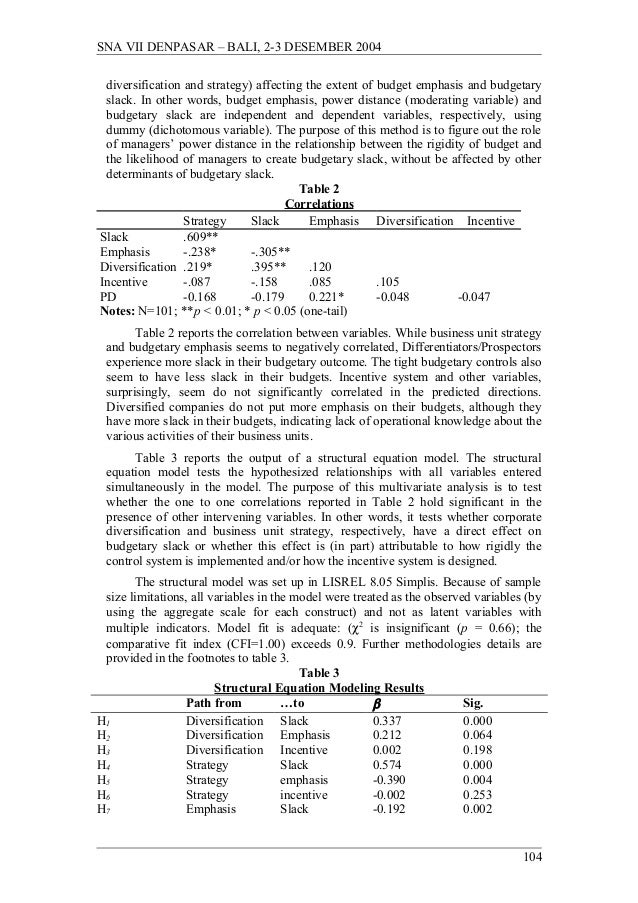Budgetary Slack
This is called the budgetary slack. Budgetary slack or looseness in the budget is one of the problems that arise because of their participatory budgeting (Hansen and Mowen, 2005). Participation in budgeting is that many variables associated with budgetary slack and found to contain the influence of inconsistent (Sari, 2006: 2).
Definition: Budgetary slack is the practice of underestimating revenues or overestimating expenses when preparing a budget in an effort to make it easier to achieve. In other words, it’s a way for management to prepare a budget with built in flexibility that will allow them to meet the budgeted goals easier.
What Does Budgetary Slack Mean?
This is a common practice in many companies that defeats the purpose of the budgeting process. A true budget must be honest and hold management accountable to the overall financial goals of the company. Many times lower-level management and subordinates don’t want to be upheld to these strict standards and budgetary restrictions.
- – The purpose of this paper is to draw on a small‐scale study that investigated the relationships between the budget‐setting process and slack, and how budgetary, behavioural and contextual factors can affect this relationship, to reconceptualise the phenomenon of budgetary slack as a budget risk management strategy., – A case study method was employed, which enabled the researchers to.
- In other words, budgetary slack is the surplus that arises when managers preparing a Budget due to overestimates costs or underestimates revenues. Most organizations would want to eliminate budget slack but some managers may be motivated to create it to improve their performance evaluations.
Rather than communicate honestly about the projected revenues and expenses of their departments, they pad their numbers to give them breathing room and circumvent the boundaries of a tight budget.
Example
Budgetary slack can be used for ethical or unethical purposes. For example, if the department is estimated to make $100,000 in sales for the year, the department management might only estimate making $80,000 in sales. By underestimating departmental revenues, the department might be immune to across the board cuts. In this respect it’s a hedge against company wide programs that could unintentionally hurt the department. Although this can mislead the top-level management, it is done to better the company.
On the other hand, if the department purposefully underestimates revenue to mislead top-level management, it can be unethical. For instance, underestimated sales figures are much easier to hit and could result in bonuses for the department that exceeds the estimated numbers.
Whether slack was created in the budget for ethical or unethical reasons, it typically misleads top management to the true profitability of the departments. That’s why it’s important for management to review the prior year’s budget and evaluate the frequency and size of variances between the actual and budgeted numbers. This process might help them correct slack in the current or future budgets.
Contents
Abstract
Purpose
–The purpose of this paper is to draw on a small‐scale study that investigated the relationships between the budget‐setting process and slack, and how budgetary, behavioural and contextual factors can affect this relationship, to reconceptualise the phenomenon of budgetary slack as a budget risk management strategy.
Design/methodology/approach
–A case study method was employed, which enabled the researchers to investigate factors suggested by prior literature that affect slack creation. In total, nine structured interviews were conducted in a state‐owned Egyptian petroleum company, which gave the researchers a different way of thinking about the budget slack phenomenon.
Findings
–The authors found that slack is created, but not perceived negatively by managers, wherever they are in the organisational hierarchy. Few factors from the literature appeared to have any effect on the creation of budgetary slack, but the covert view of budget slack as a negative behaviour, adopted by early literature was perceived by participants as unethical and inconsistent with Egyptian culture. Managers did not recognise the notion of budgetary slack, though a “contingency” was created and was seen as entirely rational and acceptable by both superiors and subordinates. These findings are consistent with more recent literature in taking a more positive view, and with risk management thinking.
Research limitations/implications
–The evidence from this small study in a single organisation obviously cannot be generalised to the whole population. More research is needed in different contexts in order to discover whether managers may perceive this link between budget contingencies and risk management. Also, further research may explore the ethical dimension of behaviour and its possible foundation in religious values and beliefs, to see if this influences how building “contingencies” into budgets is perceived.
Practical implications
–If we were to stop portraying the creation of budgetary slack as a negative behaviour and accept that practitioners find it acceptable in managing budgets in an uncertain economic environment, more managers may be open about it.
Originality/value
–
The main contribution of this paper is that it proposes that what was originally described as a negative behavioural phenomenon be rethought as a positive risk management strategy. Though other authors have viewed budget slack more positively, none has made the explicit link to risk management. The authors reposition budget slack in terms of contingency planning and show how this is consistent with risk management thinking.
Keywords
Budgetary Slack Advantages
Citation
Budgetary Slack Definition
Elmassri, M. and Harris, E. (2011), 'Rethinking budgetary slack as budget risk management', Journal of Applied Accounting Research, Vol. 12 No. 3, pp. 278-293. https://doi.org/10.1108/09675421111187700
Publisher
:Free downloads photoshop cs5 for mac. Emerald Group Publishing Limited
Download java runtime 6 for mac. Copyright © 2011, Emerald Group Publishing Limited
